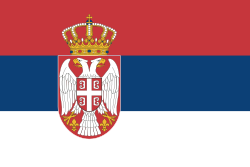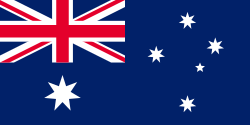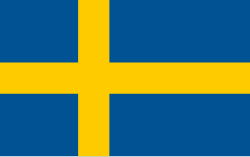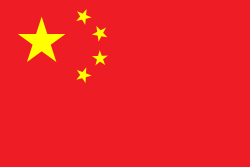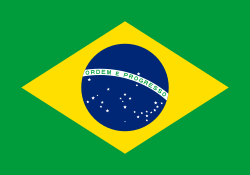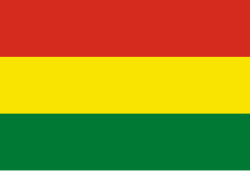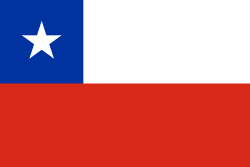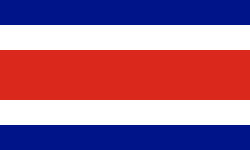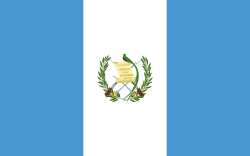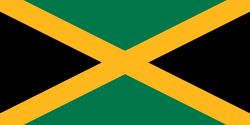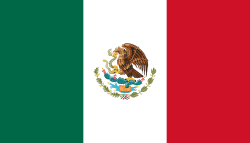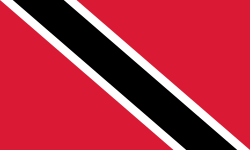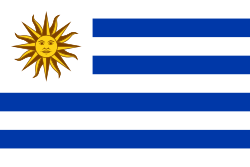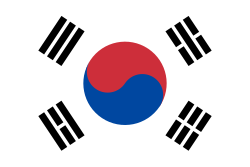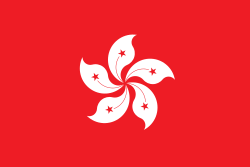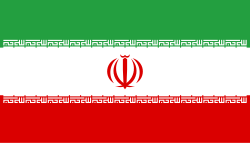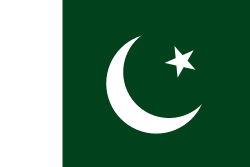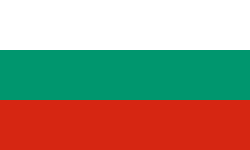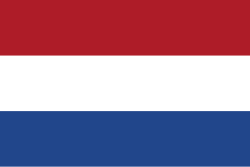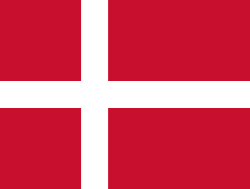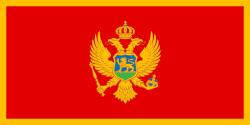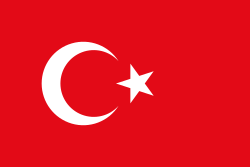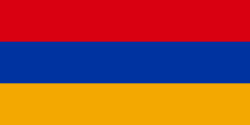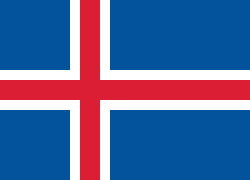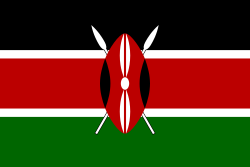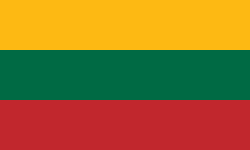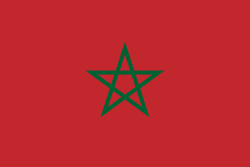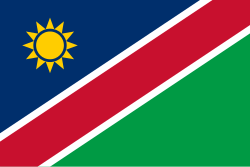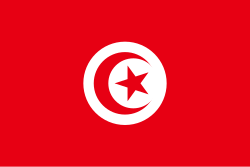Fed Cup 2012
| Fed Cup 2012 | |
|---|---|
| Datum | 4. února – 4. listopadu 2012 |
| Ročník | 50. |
| Počet | 90 družstev |
| Finálové utkání | |
| Vítěz | |
| Finalista | |
| Výsledek | 3–1 |
| Místo | Praha, Česko |
| Povrch | tvrdý / hala |
| Fed Cup | |
< 2011 2013 > | |

Fed Cup 2012, oficiálně se jménem sponzora Fed Cup by BNP Paribas 2012, byl jubilejní 50. ročník ženské tenisové týmové soutěže ve Fed Cupu, největší kolektivní soutěže v ženském sportu. Los se uskutečnil 17. července 2011 v japonském Kóbe.[1] Obhájkyně titulu, hráčky České republiky, v předešlém finále hraném 5. a 6. listopadu 2011 v Moskvě zdolaly Rusko 3:2.
První kolo Světové skupiny tohoto ročníku se konalo mezi 4. a 5. únorem, semifinále pak 21. a 22. dubna a finále se hrálo 3. a 4. listopadu 2012. Na domácí půdě k němu nastoupil obhájce titulu Česká republika proti Srbsku, které bojoval o titul poprvé v historii. Češky vyhrály 3:1 na zápasy a připsaly si sedmý titul, čímž se posunuly na celkové druhé místo za Spojené státy, když vyrovnaly sedm trofejí Australanek.
Světová skupina
Pavouk
| Čtvrtfinále 4. – 5. února | Semifinále 21. – 22. dubna | Finále 3. – 4. listopadu | |||||||||||||
| Moskva, Rusko (hala, tvrdý) | |||||||||||||||
| 1 | | 3 | |||||||||||||
| | 2 | Moskva, Rusko (hala, antuka) | |||||||||||||
| 1 | | 2 | |||||||||||||
| Charleroi, Belgie (hala, tvrdý) | | 3 | |||||||||||||
| 4 | | 2 | |||||||||||||
| | 3 | Česko (hala, tvrdý) | |||||||||||||
| | 1 | ||||||||||||||
| Biella, Itálie (hala, antuka) | 2 | | 3 | ||||||||||||
| 3 | | 3 | |||||||||||||
| | 2 | Ostrava, Česko (hala, tvrdý) | |||||||||||||
| 3 | | 1 | |||||||||||||
| Stuttgart, Německo (hala, tvrdý) | 2 | | 4 | ||||||||||||
| | 1 | ||||||||||||||
| 2 | | 4 | |||||||||||||
Finále
Česko vs. Srbsko
| Česko | 3 : | 1 | Srbsko | |||||||||||||||||||||||||||||||||||||||||||||||||||||||||||||||||||||||||||||||||||||||||
|---|---|---|---|---|---|---|---|---|---|---|---|---|---|---|---|---|---|---|---|---|---|---|---|---|---|---|---|---|---|---|---|---|---|---|---|---|---|---|---|---|---|---|---|---|---|---|---|---|---|---|---|---|---|---|---|---|---|---|---|---|---|---|---|---|---|---|---|---|---|---|---|---|---|---|---|---|---|---|---|---|---|---|---|---|---|---|---|---|---|---|---|---|
| O2 arena, Praha, Česko 4. – 5. listopadu 2012 tvrdý – Novacrylic Ultracushion (hala) | ||||||||||||||||||||||||||||||||||||||||||||||||||||||||||||||||||||||||||||||||||||||||||||
| ||||||||||||||||||||||||||||||||||||||||||||||||||||||||||||||||||||||||||||||||||||||||||||
Baráž Světové skupiny
Čtyři týmy, které prohrály v 1. kole Světové skupiny (Belgie, Německo, Španělsko, Ukrajina) se utkaly v baráži o Světovou skupinu se čtyřmi vítěznými družstvy ze Světové skupiny II (Austrálie, Japonsko, Slovensko, USA). Podle aktuálního žebříčku ITF byly čtyři nejvýše klasifikované týmy nasazeny.
| Baráž Světové skupiny – 21. a 22. dubna | |||
|---|---|---|---|
| Místo konání | Domácí | Výsledek | Hosté |
| Charkov, Ukrajina (venku, antuka) | 0–5 | ||
| Tokio, Japonsko (hala, tvrdý) | 4–1 | ||
| Marbella, Španělsko (venku, antuka) | 2–3 | | |
| Stuttgart, Německo (hala, antuka) | 2–3 | ||
Světová skupina II
Světová skupina II představovala druhou nejvyšší úroveň soutěže. Čtyři vítězné týmy nastoupily k barážovým utkáním o účast ve Světové skupině 2013 a poražení pak odehráli baráž o setrvání v této úrovni soutěže v příštím ročníku.
| Světová skupina II – 4. a 5. února | |||
|---|---|---|---|
| Místo konání | Domácí | Výsledek | Hosté |
| Worcester, Spojené státy (hala, tvrdý) | 5–0 | ||
| Tokio, Japonsko (venku, tvrdý) | 5–0 | ||
| Bratislava, Slovensko (hala, tvrdý) | 3–2 | ||
| Granges-Paccot, Švýcarsko (hala, antuka) | 1–4 | ||
Baráž Světové skupiny II
Čtyři týmy, které prohrály v 1. kole Světové skupiny II se utkaly v baráži o Světovou skupinu II se čtyřmi kvalifikanty z 1. skupin oblastních zón. Dva týmy se k barážovým zápasům kvalifikovaly z evropsko-africké zóny, jeden z asijsko-oceánské zóny a jeden z americké zóny.
| Baráž Světové skupiny II – 21. a 22. dubna | |||
|---|---|---|---|
| Místo konání | Domácí | Výsledek | Hosté |
| Besançon, Francie (tvrdý, hala) | 5–0 | ||
| Yverdon-les-Bains, Švýcarsko (tvrdý, hala) | 4–1 | ||
| Borås, Švédsko (tvrdý, hala) | 4–1 | ||
| Buenos Aires, Argentina (venku, antuka) | 4–1 | ||
Americká zóna
1. skupina
- Účastníci
 Argentina – postup do baráže o účast ve Světové skupině II pro rok 2013
Argentina – postup do baráže o účast ve Světové skupině II pro rok 2013 Bahamy – sestup do 2. skupiny Americké zóny pro rok 2013
Bahamy – sestup do 2. skupiny Americké zóny pro rok 2013 Brazílie
Brazílie Bolívie – sestup do 2. skupiny Americké zóny pro rok 2013
Bolívie – sestup do 2. skupiny Americké zóny pro rok 2013 Kanada
Kanada Kolumbie
Kolumbie Paraguay
Paraguay Peru
Peru Venezuela
Venezuela
2. skupina
- Místo konání: Guadalajara, Mexiko
- Datum: týden od 16. dubna
- Účastníci
 Chile – postup do 1. skupiny Americké zóny pro rok 2013
Chile – postup do 1. skupiny Americké zóny pro rok 2013 Kostarika
Kostarika Dominikánská republika
Dominikánská republika Ekvádor
Ekvádor Guatemala
Guatemala Jamajka
Jamajka Mexiko – postup do 1. skupiny Americké zóny pro rok 2013
Mexiko – postup do 1. skupiny Americké zóny pro rok 2013 Panama
Panama Portoriko
Portoriko Trinidad a Tobago
Trinidad a Tobago Uruguay
Uruguay
Zóna Asie a Oceánie
1. skupina
- Místo konání: Shenzhen Luohu Tennis Centre, Šen-čen, Čínská lidová republika (venku, tvrdý)
- Datum: 30. ledna – 5. února
- Účastníci
 Čína – postup do baráže o účast ve Světové skupině II pro rok 2013
Čína – postup do baráže o účast ve Světové skupině II pro rok 2013 Tchaj-wan
Tchaj-wan Indonésie – sestup do 2. skupiny zóny Asie a Oceánie pro rok 2013
Indonésie – sestup do 2. skupiny zóny Asie a Oceánie pro rok 2013 Kazachstán
Kazachstán Jižní Korea
Jižní Korea Thajsko
Thajsko Uzbekistán
Uzbekistán
2. skupina
- Místo konání: Shenzhen Luohu Tennis Centre, Šen-čen, Čínská lidová republika (venku, tvrdý)
- Datum: 30. ledna – 5. února
- Účastníci
 Hongkong
Hongkong Indie – postup do 1. skupiny zóny Asie a Oceánie pro rok 2013
Indie – postup do 1. skupiny zóny Asie a Oceánie pro rok 2013 Írán
Írán Kyrgyzstán
Kyrgyzstán Omán
Omán Pákistán
Pákistán Filipíny
Filipíny Singapur
Singapur Srí Lanka
Srí Lanka Turkmenistán
Turkmenistán
Zóna Evropy a Afriky
1. skupina



- Datum: 30. ledna – 5. února
- Účastníci
 Rakousko
Rakousko Bosna a Hercegovina
Bosna a Hercegovina Bulharsko
Bulharsko Chorvatsko
Chorvatsko Estonsko – sestup do 2. skupiny zóny Evropy a Afriky pro rok 2013
Estonsko – sestup do 2. skupiny zóny Evropy a Afriky pro rok 2013 Velká Británie – postup do baráže o účast ve Světové skupině II pro rok 2013
Velká Británie – postup do baráže o účast ve Světové skupině II pro rok 2013 Řecko – sestup do 2. skupiny zóny Evropy a Afriky pro rok 2013
Řecko – sestup do 2. skupiny zóny Evropy a Afriky pro rok 2013 Maďarsko
Maďarsko Izrael
Izrael Lucembursko
Lucembursko Nizozemsko
Nizozemsko Polsko
Polsko Portugalsko
Portugalsko Rumunsko
Rumunsko Švédsko – postup do baráže o účast ve Světové skupině II pro rok 2013
Švédsko – postup do baráže o účast ve Světové skupině II pro rok 2013
2. skupina
- Datum: týden od 16. dubna
- Účastníci
 Dánsko – sestup do 3. skupiny zóny Evropy a Afriky pro rok 2013
Dánsko – sestup do 3. skupiny zóny Evropy a Afriky pro rok 2013 Finsko
Finsko Gruzie – postup do 1. skupiny zóny Evropy a Afriky pro rok 2013
Gruzie – postup do 1. skupiny zóny Evropy a Afriky pro rok 2013 Lotyšsko
Lotyšsko Černá Hora
Černá Hora Norsko – sestup do 3. skupiny zóny Evropy a Afriky pro rok 2013
Norsko – sestup do 3. skupiny zóny Evropy a Afriky pro rok 2013 Jihoafrická republika
Jihoafrická republika Turecko – postup do 1. skupiny zóny Evropy a Afriky pro rok 2013
Turecko – postup do 1. skupiny zóny Evropy a Afriky pro rok 2013
3. skupina
- Datum: týden od 16. dubna
- Účastníci
 Alžírsko
Alžírsko Arménie
Arménie Kypr
Kypr Egypt
Egypt Island
Island Irsko
Irsko Keňa
Keňa Litva – postup do 2. skupiny zóny Evropy a Afriky pro rok 2013
Litva – postup do 2. skupiny zóny Evropy a Afriky pro rok 2013 Makedonie
Makedonie Malta
Malta Moldavsko
Moldavsko Maroko
Maroko Namibie
Namibie Tunisko – postup do 2. skupiny zóny Evropy a Afriky pro rok 2013
Tunisko – postup do 2. skupiny zóny Evropy a Afriky pro rok 2013
Odkazy
Reference
V tomto článku byl použit překlad textu z článku 2012 Fed Cup na anglické Wikipedii.
- ↑ Draw for 2012 Fed Cup to be held on 17 July. www.fedcup.com. fedcup.com. Dostupné online [cit. 14 July 2011]. (anglicky)
Externí odkazy
 Obrázky, zvuky či videa k tématu Fed Cup 2012 na Wikimedia Commons
Obrázky, zvuky či videa k tématu Fed Cup 2012 na Wikimedia Commons  Zpráva Fed Cup zůstává v Česku, obhajobu zařídila Šafářová ve Wikizprávách
Zpráva Fed Cup zůstává v Česku, obhajobu zařídila Šafářová ve Wikizprávách- (anglicky) Fed Cup Archivováno 7. 10. 2010 na Wayback Machine. – oficiální stránka
Média použitá na této stránce
Vlajka České republiky. Podoba státní vlajky České republiky je definována zákonem České národní rady č. 3/1993 Sb., o státních symbolech České republiky, přijatým 17. prosince 1992 a který nabyl účinnosti 1. ledna 1993, kdy rozdělením České a Slovenské Federativní republiky vznikla samostatná Česká republika. Vlajka je popsána v § 4 takto: „Státní vlajka České republiky se skládá z horního pruhu bílého a dolního pruhu červeného, mezi něž je vsunut žerďový modrý klín do poloviny délky vlajky. Poměr šířky k její délce je 2 : 3.“
This is the national flag of Belgium, according to the Official Guide to Belgian Protocol. It has a 13:15 aspect ratio, though it is rarely seen in this ratio.
Its colours are defined as Pantone black, Pantone yellow 115, and Pantone red 032; also given as CMYK 0,0,0,100; 0,8.5,79,0; and 0,94,87,0.Flag of Australia, when congruence with this colour chart is required (i.e. when a "less bright" version is needed).
See Flag of Australia.svg for main file information.| Flag of Bolivia* | |
|---|---|
| country | Template:I18n/Republic of Bolivia |
| used by | Bolivia |
| from | 1851 |
| until | Present |
| created by | Government of Bolivia |
| format | 15:22 |
| shape | rectangular |
| colours | červená, žlutá, zelená
flag has 3 horizontal stripes |
| other characteristics | A horizontal tricolor of red, yellow and green. |
Flag of Canada introduced in 1965, using Pantone colors. This design replaced the Canadian Red Ensign design.
Při zobrazení tohoto souboru lze snadno přidat orámování
The flag of the Dominican Republic has a centered white cross that extends to the edges. This emblem is similar to the flag design and shows a bible, a cross of gold and 6 Dominican flags. There are branches of olive and palm around the shield and above on the ribbon is the motto "Dios,Patria!, Libertad" ("God, Country, Freedom") and to amiable freedom. The blue is said to stand for liberty, red for the fire and blood of the independence struggle and the white cross symbolized that God has not forgotten his people. "Republica Dominicana". The Dominican flag was designed by Juan Pablo Duarte, father of the national Independence of Dominican Republic. The first dominican flag was sewn by a young lady named Concepción Bona, who lived across the street of El Baluarte, monument where the patriots gathered to fight for the independence, the night of February 27th, 1844. Concepción Bona was helped by her first cousin María de Jesús Pina.
The flag of the Dominican Republic has a centered white cross that extends to the edges. This emblem is similar to the flag design and shows a bible, a cross of gold and 6 Dominican flags. There are branches of olive and palm around the shield and above on the ribbon is the motto "Dios,Patria!, Libertad" ("God, Country, Freedom") and to amiable freedom. The blue is said to stand for liberty, red for the fire and blood of the independence struggle and the white cross symbolized that God has not forgotten his people. "Republica Dominicana". The Dominican flag was designed by Juan Pablo Duarte, father of the national Independence of Dominican Republic. The first dominican flag was sewn by a young lady named Concepción Bona, who lived across the street of El Baluarte, monument where the patriots gathered to fight for the independence, the night of February 27th, 1844. Concepción Bona was helped by her first cousin María de Jesús Pina.
Flag of Jamaica. “The sunshine, the land is green, and the people are strong and bold” is the symbolism of the colours of the flag. GOLD represents the natural wealth and beauty of sunlight; GREEN represents hope and agricultural resources; BLACK represents the strength and creativity of the people. The original symbolism, however, was "Hardships there are, but the land is green, and the sun shineth", where BLACK represented the hardships being faced.
Chinese Taipei Olympic Flag. According to the official website of Chinese Taipei Olympic Committee, Blue Sky(circle) & White Sun(triangles) above the Olympic rings is neither the National Emblem of the Republic of China, nor the Party Emblem of Kuomintang (KMT), but a design in between, where the triangles do not extend to the edge of the blue circle, as registered at International Olympic Committee in 1981 and digitally rendered in 2013. Besides, the blue outline of the five-petaled plum blossom is broader than the red one. Moreover, the CMYK code of the blue one and the Blue Sky & White Sun is "C100-M100-Y0-K0", and different from the Olympic rings (C100-M25-Y0-K0). Note that it's the only version recognized by IOC.
bendera Indonesia
The national flag of Kingdom of Thailand; there are total of 3 colours:
- Red represents the blood spilt to protect Thailand’s independence and often more simply described as representing the nation.
- White represents the religion of Buddhism, the predominant religion of the nation
- Blue represents the monarchy of the nation, which is recognised as the centre of Thai hearts.
Flag of Iran. The tricolor flag was introduced in 1906, but after the Islamic Revolution of 1979 the Arabic words 'Allahu akbar' ('God is great'), written in the Kufic script of the Qur'an and repeated 22 times, were added to the red and green strips where they border the white central strip and in the middle is the emblem of Iran (which is a stylized Persian alphabet of the Arabic word Allah ("God")).
The official ISIRI standard (translation at FotW) gives two slightly different methods of construction for the flag: a compass-and-straightedge construction used for File:Flag of Iran (official).svg, and a "simplified" construction sheet with rational numbers used for this file.
Flag of Portugal, created by Columbano Bordalo Pinheiro (1857-1929), officially adopted by Portuguese government in June 30th 1911 (in use since about November 1910).
Finská vlajka
Georgian flag in Pantone MS.
Used color: National flag | South African Government and Pantone Color Picker
| zelená | rendered as RGB 0 119 73 | Pantone 3415 C |
| žlutá | rendered as RGB 255 184 28 | Pantone 1235 C |
| červená | rendered as RGB 224 60 49 | Pantone 179 C |
| modrá | rendered as RGB 0 20 137 | Pantone Reflex Blue C |
| bílá | rendered as RGB 255 255 255 | |
| černá | rendered as RGB 0 0 0 |
The Flag of Iceland.
- Horizontal aspect ratio: 7:1:2:1:14;
- Vertical aspect ratio: 7:1:2:1:7.
Zelený pruh má znázorňovat většinové katolické obyvatelsto Irska, oranžový pruh reprezentuje protestantskou menšinu a bílý pruh uprostřed znázorňuje mír a harmonii mezi nimi.
Flag of Namibia
Autor: Assaf Yekuel, Licence: CC BY-SA 3.0
The tennis player Agnieszka Radwańska of Poland during her match against Petra Martić of Croatia in the 2nd day of Fed Cup Group I 2012 Europe/ Africa in Eilat, Israel.
Autor: Assaf Yekuel, Licence: CC BY-SA 3.0
The tennis player Johanna Larsson of Sweden during her match against Tímea Babos of Hungaria in the 2nd day of Fed Cup Group I 2012 Europe/ Africa in Eilat, Israel.
Autor: Assaf Yekuel, Licence: CC BY-SA 3.0
The tennis player Tsvetana Pironkova of Bulgaria during her match against Tamira Paszek of Austria in the 3rd day of Fed Cup Group I 2012 Europe/ Africa in Eilat, Israel
Chinese Taipei Olympic Flag. According to the official website of Chinese Taipei Olympic Committee, Blue Sky(circle) & White Sun(triangles) above the Olympic rings is neither the National Emblem of the Republic of China, nor the Party Emblem of Kuomintang (KMT), but a design in between, where the triangles do not extend to the edge of the blue circle, as registered at International Olympic Committee in 1981 and digitally rendered in 2013. Besides, the blue outline of the five-petaled plum blossom is broader than the red one. Moreover, the CMYK code of the blue one and the Blue Sky & White Sun is "C100-M100-Y0-K0", and different from the Olympic rings (C100-M25-Y0-K0). Note that it's the only version recognized by IOC.
Autor: Александр Осипов, Licence: CC BY-SA 2.0
Part two of her forehand.

